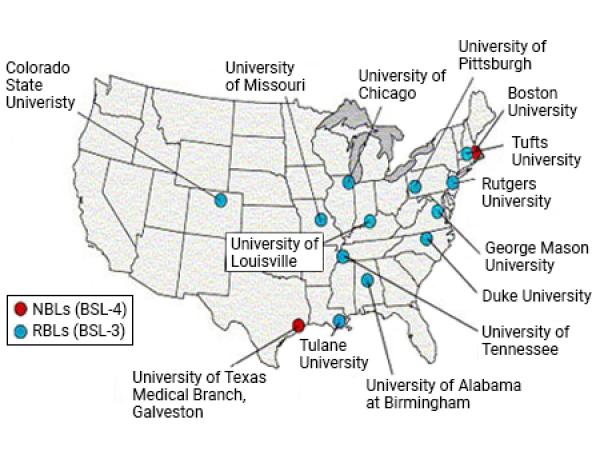NIAID has a comprehensive research infrastructure with extensive resources that support all levels of biodefense and emerging infectious diseases research and pursuit of multiple broad-spectrum concepts.

Map of NBL and RBL facility locations in the United States. The facilities are listed below.
This infrastructure includes:
Centers of Excellence for Translational Research (CETR)
In 2014, NIAID established the CETR program focused on countering threats from emerging and re-emerging infectious diseases. The Centers support multifaceted research and development activities that promote scientific discovery and the translational research to create the next generation of therapeutics, vaccines, and diagnostics. The CETR program builds upon the accomplishments of the NIAID Regional Centers of Excellence for Biodefense and Emerging Infectious Diseases Research (RCE) program and other NIAID-supported programs.
Biocontainment Research Laboratories
- National Biocontainment Laboratories (NBLs) and Regional Biocontainment Laboratories (RBLs)—Two NIAID-funded biosafety level 4 (BSL-4) NBLs and 12 (BSL-3) RBLs are available to the extramural research community for research requiring high levels of containment. These laboratories are prepared to assist national, state and local public health efforts in the event of a bioterrorism or infectious disease emergency.
- NIAID has also constructed two BSL-4 and one BSL-3 biocontainment research facilities located in Maryland and Montana. These facilities are staffed by world-class NIAID scientists conducting research on biodefense and emerging re-emerging infectious disease.
Vaccine and Treatment Evaluation Units
These clinical sites, located at eight universities nationwide, allow for extensive clinical trials capacity and expertise. They played a key role in testing the vaccine for the 2009 H1N1 influenza pandemic.

